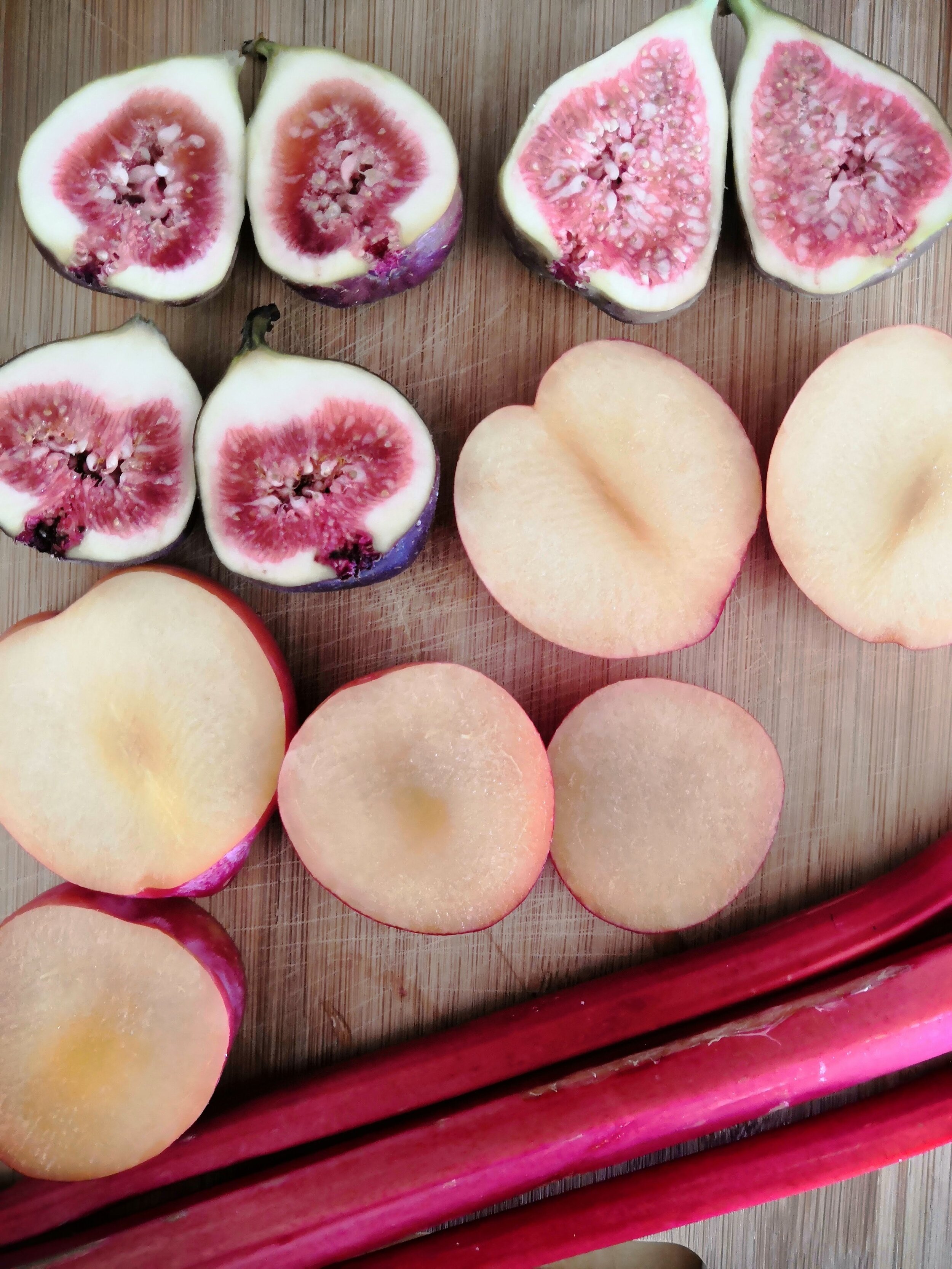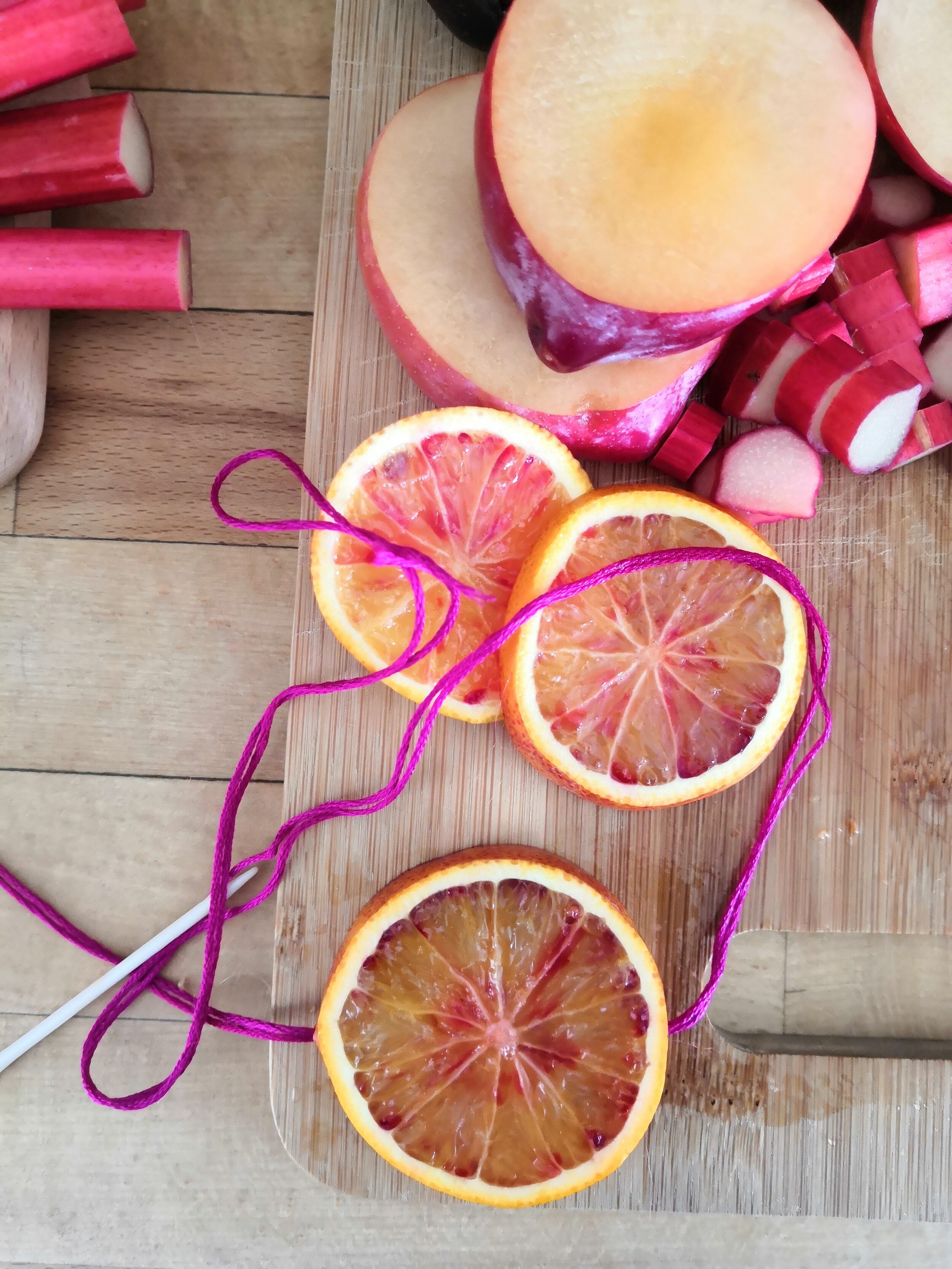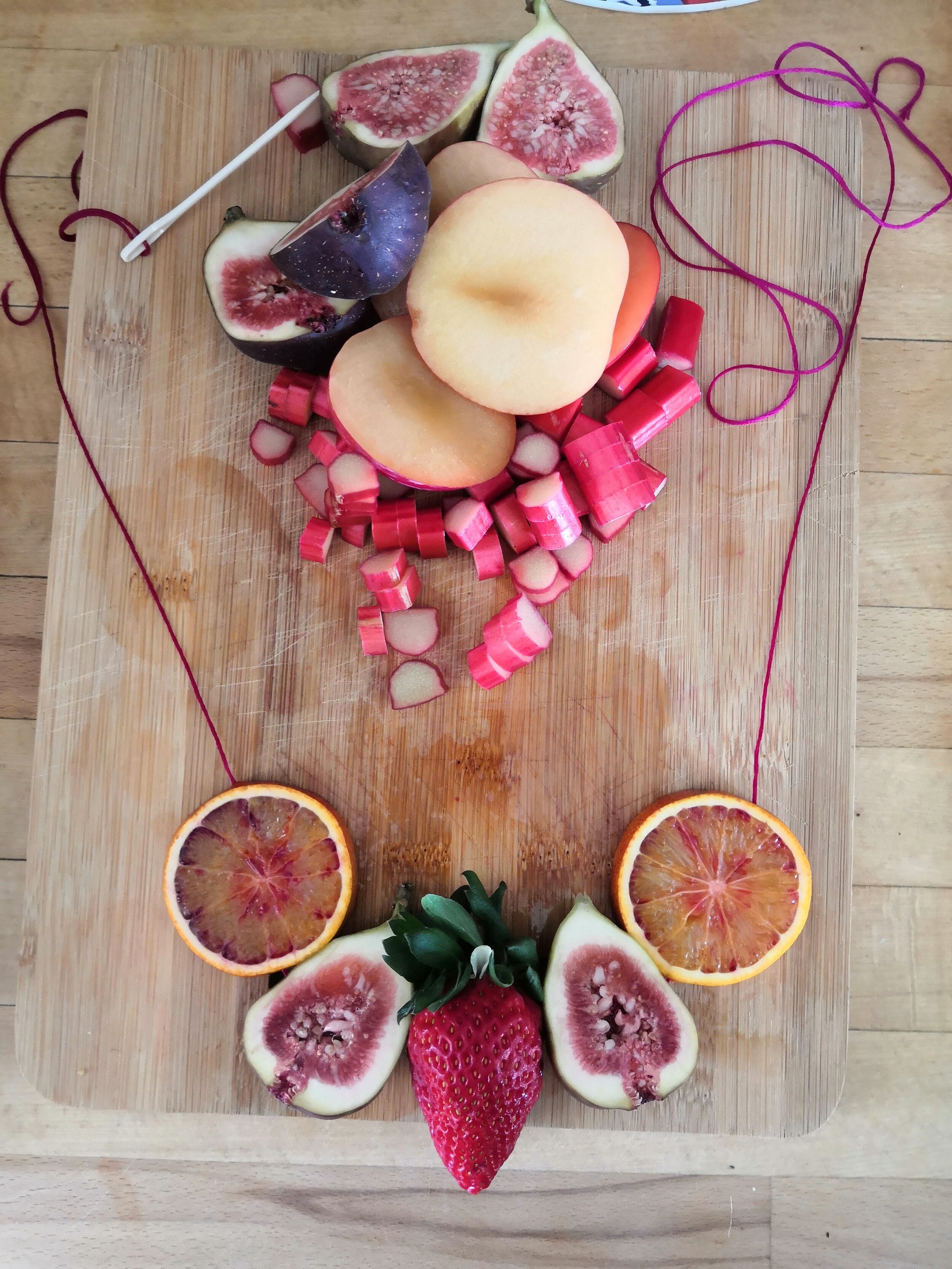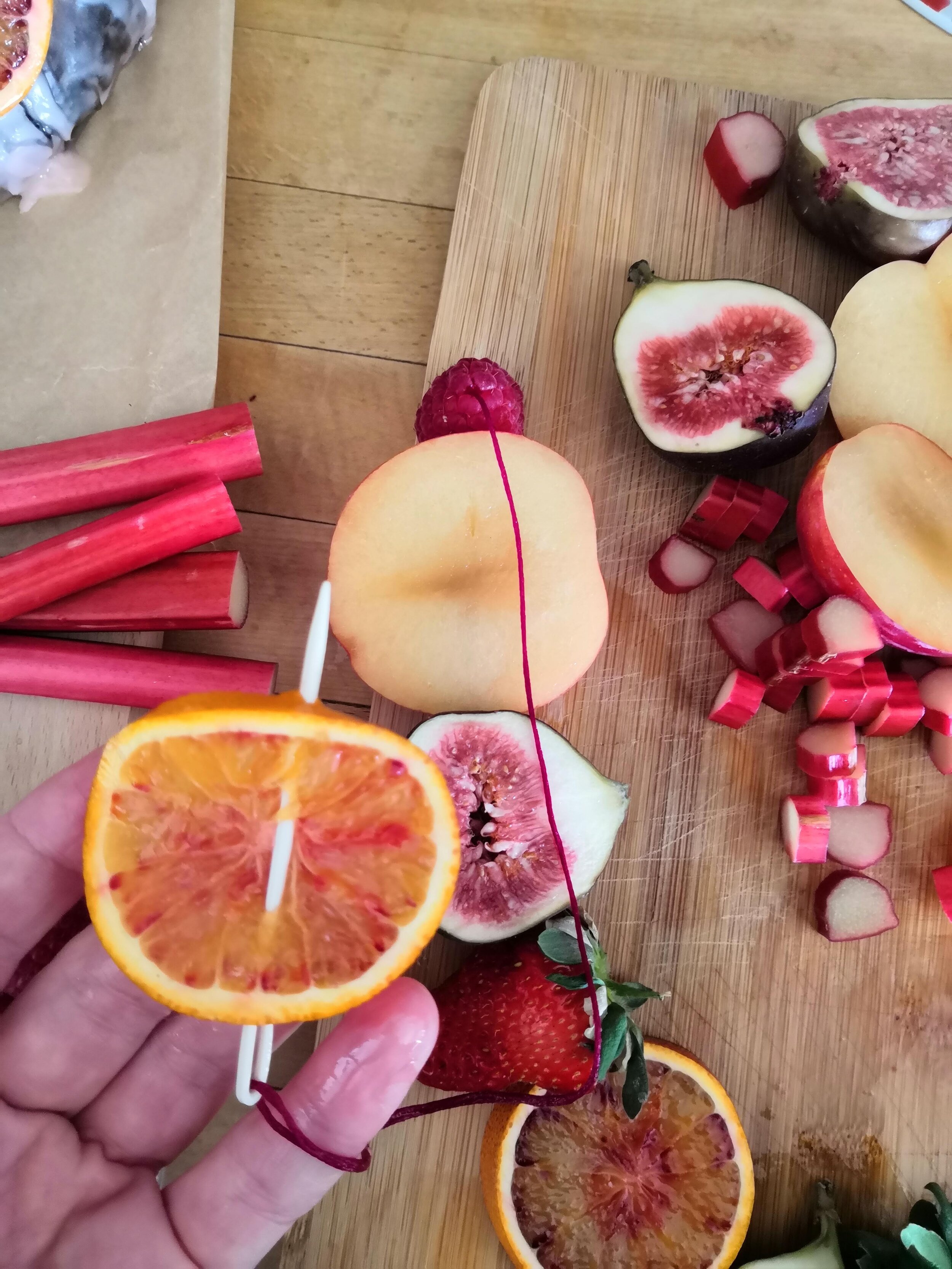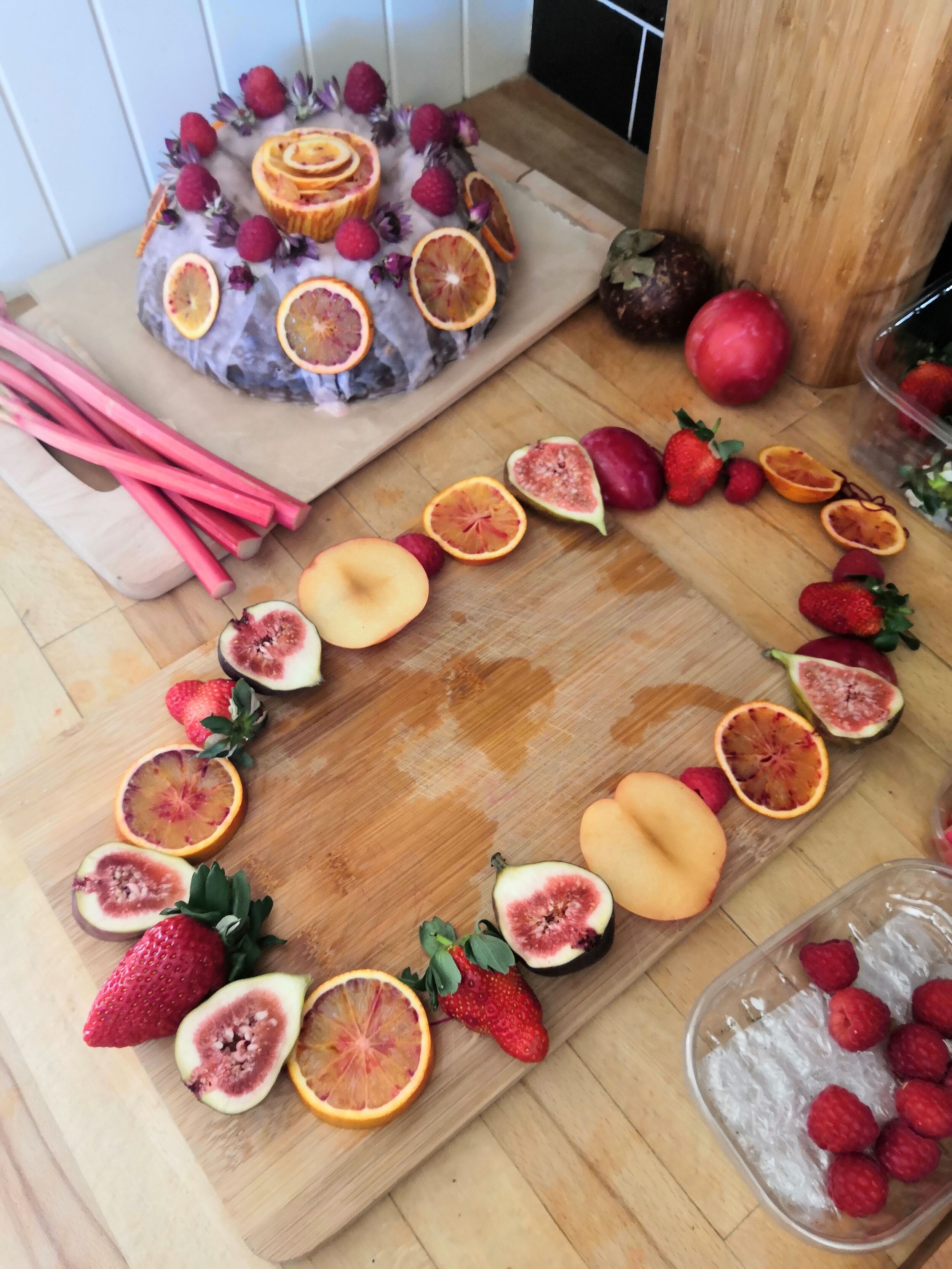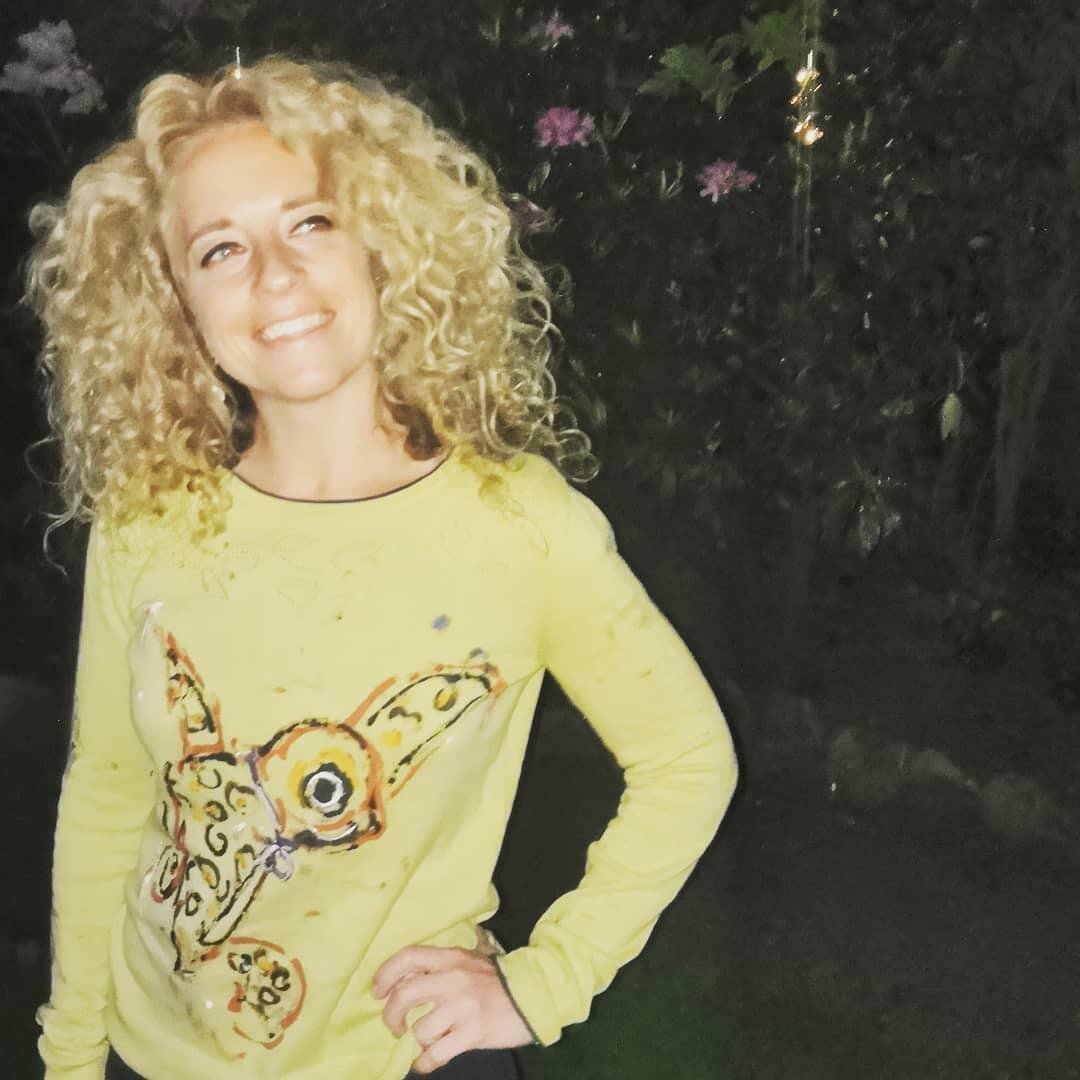Lent With Eve
Angelica Vanasse
“It was very much about following a process and exploring a ritual.”
Interview by L. Valena
Can you start by describing what you responded to?
I responded to a painting called Eve. I started by just spending some time looking and thinking about it. It’s a really strong, striking work with loads and loads of symbolism. Some very strong pagan connotations, but it was really interesting to approach it with the title in mind— a pagan interpretation of Eve. A kind of human/animal/plant, all together.
I grew up Catholic, and there are things that people who grew up Catholic talk about after. Like you can’t quite shake the way you read things, the way you look at things, or feel judgement. Even if you’re like, “that’s not me.” But that’s how you may be able to read and contextualize it. I quite liked the pomegranate in there, and the moon symbols. The body with the plants emerging from it.
I’ve been thinking back to my art school days. I used to do a lot around Catholic rituals, and sins. I found a lot of my earlier artwork was rooted in exploring those things and looking at what they mean. I am fascinated by the idea of ritual, and the way things have been set up to follow, and the rules put around things. I spent quite a lot of time away from that, but it was really interesting to come back to it.
It was very much about following a process and exploring a ritual. That’s where my head went with this. It was Eve, and it was that idea as well where so many of the religious structures that are built around that pagan wheel, and looking at that. Thinking about how those things sit together, and looking at Brigid, sitting kind of in Pagan and Catholic realms, that sort of thing.
So I sat with the painting and just tried to soak up things around the colors and the imagery and symbolism. I wanted to involve plants, and some sort of adornment. I think with it being Eve, I wanted to explore food and eating in a way that kind of really involves the senses, but especially taste and consuming. It was funny, because I’m talking about revisiting my Catholic youth— I haven’t said any of this stuff out loud for years. But when I can remember, I do Lent, because I quite like the challenge of it. I don’t know what that’s about. But I really like revisiting those control structures around giving things up. I do think it’s nicer to do something where you dedicate the time to bring something good into whatever you’re doing. Trying to balance.
This year I was trying to be more nurturing to myself and the living creatures in my life. And at the same time I decided to give up all baked goods for Lent. I decided I wouldn’t have any baked goods, except bread. But it’s been really difficult because I love to bake. I usually give up chocolate, but I decided to do baked goods because I’ve been very attached to chocolate since January. So that’s where my head went with it. I knew it would involve baking, a ritual, and a dedication to eating.
I felt for Eve. She ate something she shouldn’t have. It’s this kind of withholding. And also just thinking about what I knew of Eve and then what I was seeing in this artwork.
What happened next?
I sat with it for a while. And I think there were things going on in my head about my creative process. I went to art school, went on to get my Masters, and started to do a textiles degree in the states. It was a three year program, and it just didn’t jive with me. And at the same time, I had an opportunity to move to the UK. So I stopped that Masters, came here, and then did a Masters focused in learning and interaction in gallery spaces. So it kept up with the art, but I shifted away from my own practice to facilitate the process for other people in museums and galleries. I feel like I’ve considered myself a creative practitioner throughout that time, but I didn’t have as much focus on my own practice, it was more about enabling others. And that’s what I’ve been doing and working toward for the past long while.
So it was really liberating to have this. I’ve made artwork since art school, but I feel like it was one of the more focused moments I’ve had with it, which felt really liberating. It was nice to sit with the idea of Eve, and the idea of permission and judgement. Whenever I think of Eve, I think of the idea of permission and rules. When we make things, how we get so caught up in judging it and overthinking it. I had to just really let myself go with it.
I went to the local farm shop and just went to town, but kind of channeling Eve. I was channeling this painting, thinking about the colors and imagery. What would this being buy? What would she have? It was quite frivolous, it was the most decadent farm shop trip I’ve ever had. All of the fruit, all of the lush flowers. I just had this huge box when I came out of the farm shop, and it was purely intuitive. But not just the stuff I wanted, I was doing it for Eve, I was trying to think about what I would need to do this ritual. So in lieu of the hunter/gather forage, it was a really nice farm shop experience.
So I brought all that home, and I decided to bake a cake. And when I started looking at all the ingredients, there was a lot of fruit, and I thought it would be really amazing to have some sort of adornment as part of the ritual. I had the flowers, because I felt like they came out of the painting. So I thought it was a bit of the embodiment of where I was starting from. It was a way to kind of grow that and let it unfurl.
I set up a ritual around my mixer, and made this cake. It was buttermilk, coconut, vanilla, and cherries. Flour, leavening agents, the good foundation there.
I baked up the cake, and let it chill overnight. And then the next day just decided to go for it. I used the blood oranges to make a glaze, and the color was really beautiful, that was just sugar and blood orange juice that did that.
When I first looked at this, I thought a lot about humans and nature. That’s been woven into my practice for as long as I can remember. It was quite literal in painting. I was thinking about trying to bring these things together, and then it got me thinking about when I was little, how I loved to play witches. I loved potions, and spells, and I just had loads of weird little stockpiles of things I had collected. Bones. Wrecking all my mom’s spices to make other potions. I liked that idea of coming back to yourself as a child, and exploring that way.
There are so many places where my head went with this, but a lot of it was about embodying Eve, but also embodying my five-year-old self. What colors would I be drawn to? What would I want to do? It felt so impulsive and innate, that it was really liberating.
I made this cake, and tried to make it really enticing to look at. That idea of forbidden fruit, when you really want something. And while I was doing that I was making the necklace. The fruit necklace and the cake, it was a back and forth process. I documented loads, because I didn’t know it was going to turn into a photographic triptych. I knew I was going to bake, and do a ritual, and see what the outputs were, trusting that it would make sense in the end.
I tried to put on the fruit necklace, and it was kind of funny. Some of the fruit tore and fell off, and I loved that. It looked so perfect, and then fell apart. It was so cold, and heavy, and sticky. That was interesting, because of this idea of ritual and adornment. The way you might think of a pagan goddess. You have this romantic idea about embodying something, but then you think, “this isn’t what I thought it would be, it’s kind of sticky and it itches.”
The ritual was really intuitive, and reflecting on it now, I was definitely channeling that sense of play. When you’re a kid, and you have ideas about the world, and you’re picking up things, but you haven’t quite fully formed your ideas about the world yet. So the process was very much that learning and exploring, and not being fixed on an outcome. And at the same time, holding those adult, lived ideas about expectations, the values assigned to people. Balancing that really instinctual, child-like sense of curiosity, and then having the weight of being an adult on your shoulders, and what’s happening in the world around you. Looking at those spaces where you play witches out in nature; depending on who you are, is it a safe space for you to be or not?
To bring it back to Eve, it’s that idea of judgement and safety and permission and acceptance. I was holding these really heavy adult concepts with this curiosity, and it’s kind of the collision of the two that brought the process to where it was.
How did it go from being a ritual to becoming a triptych?
What I suppose brought it to the triptych was revisiting symbolism, which was the first thing that hit me in the painting. It was about those images, and symbols, and the associations we make. Now that I went through the experience, I needed to distill it to convey it somehow. For me it was being able to share that through the symbols.
Maybe not permission or acceptance, but liberation. The barriers that might obstruct things for people in so many ways. And then a way to represent participating in something— for me that was the necklace. The ritual was making the cake. There’s something about consuming something- it will literally become a part of you. It will build some cells in your body if you eat that cake!
It was funny, because I gave some to my partner to take to work, and I was just thinking: It’s going to be these guys on a construction site, eating this cake that was made for Eve. They have no idea. I felt like a true witch at that moment. That’s enchanted cake, and they have no idea. It’s going to become a part of them.
There’s these two things: the weight of what’s going on in the world now, what’s really present, and then also the past that we bring with us when we do things, that we can revisit through a process. And then I like the idea of a ritual being a dedication to something. You see that in Catholicism, and you see that in all sorts of different Pagan rites and rituals. I like holding those two together, and then having the three- it’s a strong thing the number 3 I think.
Something just struck me about Eve. In that story, if Eve hadn’t eaten the fruit, nothing would have happened. It was basically the big bang of the human condition.
Right! That idea that she unleashed the chaos that created life, and to be human is to make messes and to learn from those messes. I find it really interesting to look at religious and historical texts- the way that gender is assigned, and broken down and proscribed and constructed. I found that interesting but difficult to engage with at the start of this. I think for it to feel human I need it to feel more inclusive. I wanted it to be a ritual that anyone could experience and embody. You could do rituals for all sorts of different things. Kind of like having a set of instructions or a toolkit to do a ritual for this part of life, this experience, or this emotion. My head’s gone loads of places with it. These stories underpin so much of what bubbles up.
That’s so cool. I’m so excited to see where you go with this- it seems like it’s opened up a really interesting line of inquiry.
It really has! I’ve been so grateful for this experience. It’s given me that permission and focus. You get two weeks to do this, which is a really healthy amount of time. It’s enough to procrastinate and think a bit, but then you have to get it done. I think its not about being led by the outcome, but there’s something soothing about knowing what the form will be. So then you have those parameters to work into, and I want to look at all the things that have opened up in my mind.
In the pandemic, a lot of what I’ve seen for myself is finding hope in ritual and routine. But at the same time there’s a tension there, because it can be really repetitive and oppressive. Sometimes you’re like, “I had this great routine last month, but I just can’t be bothered now.” I think that’s why people find organized religion so helpful- it tells you what to do! What are the rules? But I want to give people a set of instructions to liberate themselves through doing.
I watch a lot of Food Network, and according to this show, some people call recipes ‘rules’. Some rituals might be really strict, there’s a routine to follow. I think there’s something to be said for ritual.
Do you have any advice for someone else approaching this for the first time?
I was almost too aware that the outcome would be something that someone else was going to use. “Is what I’m doing going to make sense for someone else to respond to?” My advice is to shelve that. To really sit with what you’re seeing as your rules and limitations for how you need to approach it. To accept that, but then let yourself do things anyway, and not be too hung up on it. Don’t adhere to it, don’t completely ignore it. Sit with it.
Have that discomfort with you, but then see where your process takes you. I think I found a liberation point in holding those things together. And then I had finished it, and I had no idea that it was going to happen. It was kind of like waking up and saying, “I did this?” Sit with what you’re holding as your barriers and limitations, but don’t be afraid to completely let your intuition drive what you’re doing. It’s a space to be quite playful and open, and to hold all the things that you think of as barriers or issues. To not be too weighed down by it, but to sit with it.
Call Number: Y49VA | Y50VA.vaLe
Angelica Vanasse is an American bred, UK-based creative practitioner living in Lancashire, England with her partner and their springer spaniel pup Douglas Buttons. Angelica works as an engagement and learning specialist in museums and galleries alongside exploring creative processes rooted in photography, drawing, writing and sculpture. Cakes are one of her favourite creative mediums.







